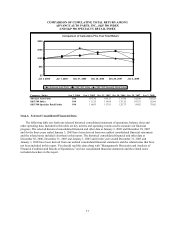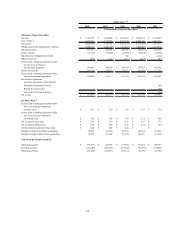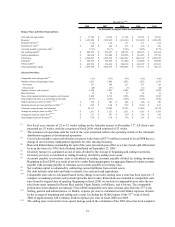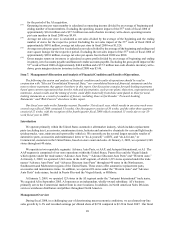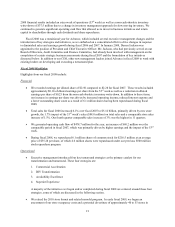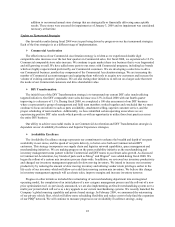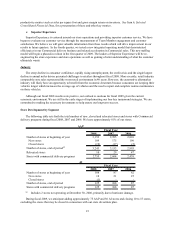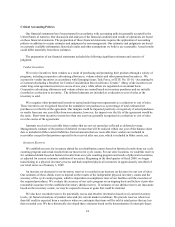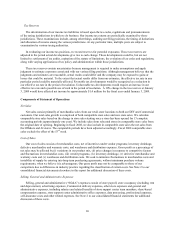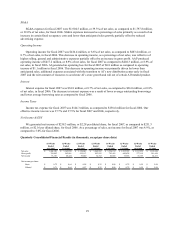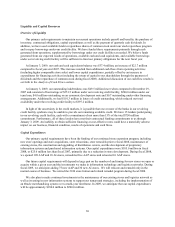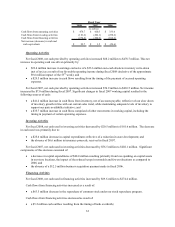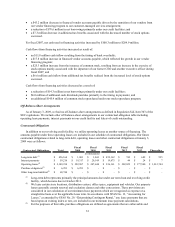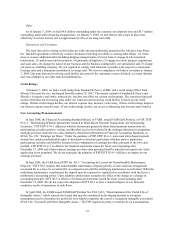Advance Auto Parts 2008 Annual Report Download - page 40
Download and view the complete annual report
Please find page 40 of the 2008 Advance Auto Parts annual report below. You can navigate through the pages in the report by either clicking on the pages listed below, or by using the keyword search tool below to find specific information within the annual report.26
Tax Reserves
The determination of our income tax liabilities is based upon the tax codes, regulations and pronouncements
of the taxing jurisdictions in which we do business. Our income tax returns are periodically examined by those
jurisdictions. These examinations include, among other things, auditing our filing positions, the timing of deductions
and allocation of income among the various jurisdictions. At any particular time, multiple years are subject to
examination by various taxing authorities.
In evaluating our income tax positions, we record reserves for potential exposures. These tax reserves are
adjusted in the period actual developments give rise to such change. Those developments could be, but are not
limited to: settlement of tax audits, expiration of the statute of limitations, the evolution of tax codes and regulations,
along with varying applications of tax policy and administration within those jurisdictions.
These tax reserves contain uncertainties because management is required to make assumptions and apply
judgment to estimate exposures associated with our various filing positions. Although management believes that the
judgments and estimates are reasonable, actual results could differ and the company may be exposed to gains or
losses that could be material. To the extent that actual results differ from our estimates, the effective tax rate in any
particular period could be materially affected. Favorable tax developments would be recognized as a reduction in
our effective tax rate in the period of resolution. Unfavorable tax developments would require an increase in our
effective tax rate and a possible use of cash in the period of resolution. A 10% change in the tax reserves at January
3, 2009 would have affected net income by approximately $1.4 million for the fiscal year ended January 3, 2009.
Components of Statement of Operations
Net Sales
Net sales consist primarily of merchandise sales from our retail store locations to both our DIY and Commercial
customers. Our total sales growth is comprised of both comparable store sales and new store sales. We calculate
comparable store sales based on the change in store sales starting once a store has been opened for 13 complete
accounting periods (approximately one year). We include sales from relocated stores in comparable store sales from
the original date of opening. Beginning in fiscal 2008, we also include in comparable store sales the net sales from
the Offshore and AI stores. The comparable periods have been adjusted accordingly. Fiscal 2008 comparable store
sales exclude the effect of the 53rd week.
Cost of Sales
Our cost of sales consists of merchandise costs, net of incentives under vendor programs; inventory shrinkage,
defective merchandise and warranty costs; and warehouse and distribution expenses. Gross profit as a percentage of
net sales may be affected by (i) variations in our product mix, (ii) price changes in response to competitive factors
and fluctuations in merchandise costs, (iii) vendor programs, (iv) inventory shrinkage, (v) defective merchandise and
warranty costs and (v) warehouse and distribution costs. We seek to minimize fluctuations in merchandise costs and
instability of supply by entering into long-term purchasing agreements, without minimum purchase volume
requirements, when we believe it is advantageous. Our gross profit may not be comparable to those of our
competitors due to differences in industry practice regarding the classification of certain costs. See Note 2 to our
consolidated financial statements elsewhere in this report for additional discussion of these costs.
Selling, General and Administrative Expenses
Selling, general and administrative (“SG&A”) expenses consist of store payroll, store occupancy (including rent
and depreciation), advertising expenses, Commercial delivery expenses, other store expenses and general and
administrative expenses, including salaries and related benefits of store support center team members, share-based
compensation expense, store support center administrative office expenses, data processing, professional expenses,
self-insurance costs and other related expenses. See Note 2 to our consolidated financial statements for additional
discussion of these costs.



